Leveraging AWS Service Status Notifications for Proactive Incident Management
- Nitin Yadav
- Knowledge
About

AWS Service Status Notifications enable businesses to minimize downtime, automate incident response, and enhance cloud resilience by integrating AWS PHD, EventBridge, CloudWatch, and Lambda.
Industries
- Automation, AWS, Cloud Monitoring, DevOps, Incident Management
Share Via
Introduction
Why Real-Time Incident Management is Critical in Cloud Environments
Businesses rely on AWS to run mission-critical applications and services. However, downtime, performance degradation, and service disruptions can severely impact operations, leading to financial losses and reputational damage. Without real-time visibility into AWS service health, organizations may struggle to detect and respond to incidents promptly, increasing recovery times and reducing service reliability.
AWS Service Status Notifications and Their Role in Proactive Incident Response
AWS provides Service Status Notifications through various tools like the AWS Personal Health Dashboard (PHD) and AWS Health Dashboard, allowing businesses to track AWS service health in real-time. These notifications help IT teams identify outages, performance issues, and upcoming maintenance events that might affect their cloud infrastructure. Additionally, businesses can integrate AWS notifications with Amazon EventBridge, AWS CloudWatch, and AWS Systems Manager to automate responses and minimize downtime.
With proactive monitoring and automated remediation, organizations can mitigate risks, streamline incident response, and maintain high availability of their cloud services.
How AWS Notifications Enhance Cloud Resilience and Operational Efficiency
By leveraging AWS Service Status Notifications, businesses can:
- Minimize Downtime: Get real-time alerts for AWS service disruptions and act immediately.
- Enhance Operational Efficiency: Automate incident responses using AWS Lambda and EventBridge.
- Improve Cloud Resilience: Proactively adjust workloads and failover strategies based on AWS status updates.
Understanding AWS Service Status Notifications
What Are AWS Service Status Notifications?
AWS Service Status Notifications provide real-time updates about the health of AWS services, allowing businesses to monitor outages, maintenance events, and performance degradation. AWS provides two primary ways to track service status:
- AWS Service Health Dashboard: A public-facing dashboard displaying current and historical AWS service availability across all regions.
- AWS Personal Health Dashboard (PHD): A personalized dashboard offering real-time, account-specific notifications regarding AWS services that impact a business’s cloud environment.
Types of AWS Notifications
AWS provides two categories of service notifications:
- Public Service Status Updates (AWS Health Dashboard):
- Displays regional service outages and performance degradation.
- Accessible via AWS’s public dashboard without requiring login.
- Does not provide account-specific insights.
- Personalized Notifications (AWS PHD, EventBridge, CloudWatch):
- Provides account-specific alerts based on the services in use.
- Integrated with Amazon EventBridge, CloudWatch, and SNS for automated response.
- Helps businesses proactively address potential service disruptions before they impact operations.
Why Businesses Should Monitor AWS Service Status
- Proactive Issue Detection: Receive alerts before disruptions impact workloads.
- Automated Response Integration: Connect notifications with AWS Lambda for automated remediation.
- Improved Compliance: Maintain service-level agreements (SLAs) and regulatory adherence.
- Operational Resilience: Reduce recovery time by addressing issues as they arise.
Key AWS Services for Proactive Incident Management
1. AWS Personal Health Dashboard (PHD)
AWS PHD provides real-time, personalized notifications about AWS service events that may impact a business’s cloud environment.
- Displays maintenance schedules, outages, and security alerts.
- Integrates with Amazon EventBridge for automated incident response.
- Helps businesses plan failovers and preemptively mitigate service disruptions.
2. Amazon CloudWatch
Amazon CloudWatch enables continuous monitoring and automated responses to incidents.
- Collects and analyzes logs, metrics, and application performance data.
- Triggers alarms based on predefined thresholds for CPU, memory, and network utilization.
- Sends alerts via Amazon SNS or AWS Lambda for automated response.
Example AWS CloudWatch Alarm for High CPU Usage:
aws cloudwatch put-metric-alarm --alarm-name "HighCPUUsage" \
--metric-name CPUUtilization --namespace AWS/EC2 \
--statistic Average --period 60 --threshold 80 \
--comparison-operator GreaterThanThreshold \
--dimensions Name=InstanceId,Value=i-1234567890abcdef0 \
--evaluation-periods 2 --alarm-actions arn:aws:sns:us-east-1:123456789012:my-sns-topic
3. AWS EventBridge
AWS EventBridge allows businesses to automate workflows in response to AWS service notifications.
- Routes real-time AWS PHD alerts to operations teams.
- Triggers AWS Lambda functions to remediate incidents automatically.
- Enables integration with third-party tools like Slack, PagerDuty, and ServiceNow.
Example EventBridge Rule to Trigger Lambda on AWS PHD Notification:
aws events put-rule --name "AWSPHDNotificationRule" \
--event-pattern '{"source":["aws.health"]}' \
--state ENABLED
4. AWS Systems Manager
AWS Systems Manager provides automated solutions for incident response and remediation.
- Executes automated runbooks for common operational tasks.
- Monitors system health through AWS resources like EC2, RDS, and S3.
- Simplifies compliance auditing with AWS Config integration.
5. AWS Lambda for Automated Remediation
AWS Lambda enables businesses to automate incident responses without manual intervention.
- Executes predefined scripts when service disruptions occur.
- Triggers scaling policies to reallocate resources.
- Works with CloudWatch and EventBridge for real-time automation.
Example AWS Lambda Function to Restart an EC2 Instance After Failure:
import boto3
ec2 = boto3.client('ec2')
def lambda_handler(event, context):
instance_id = event['detail']['instance-id']
ec2.reboot_instances(InstanceIds=[instance_id])
return f"Instance {instance_id} rebooted successfully"
By integrating these AWS services, businesses can create a robust incident management framework, automate response workflows, and minimize downtime in the event of AWS service disruptions.
Implementing AWS Service Status Notifications for Incident Response
Step 1: Setting Up AWS Health Alerts (AWS PHD, EventBridge, SNS)
AWS Health Alerts can be configured to provide real-time notifications on service disruptions:
- AWS Personal Health Dashboard (PHD): Delivers personalized alerts on service health impacting your environment.
- Amazon EventBridge: Routes AWS Health alerts to automation workflows.
- Amazon SNS (Simple Notification Service): Sends notifications via email, SMS, or application messaging systems.
aws sns create-topic --name AWSPHDAlerts
aws sns subscribe --topic-arn arn:aws:sns:us-east-1:123456789012:AWSPHDAlerts --protocol email --notification-endpoint your-email@example.com
Step 2: Configuring CloudWatch Alarms for Service Degradation
Amazon CloudWatch monitors service metrics and triggers alarms when thresholds are breached.
aws cloudwatch put-metric-alarm --alarm-name "HighCPUUsage" \
--metric-name CPUUtilization --namespace AWS/EC2 \
--statistic Average --period 60 --threshold 80 \
--comparison-operator GreaterThanThreshold \
--dimensions Name=InstanceId,Value=i-1234567890abcdef0 \
--evaluation-periods 2 --alarm-actions arn:aws:sns:us-east-1:123456789012:AWSPHDAlerts
Step 3: Automating Incident Response Using AWS Lambda
AWS Lambda can automatically trigger actions like restarting services or scaling resources in response to service issues.
import boto3
ec2 = boto3.client('ec2')
def lambda_handler(event, context):
instance_id = event['detail']['instance-id']
ec2.reboot_instances(InstanceIds=[instance_id])
return f"Instance {instance_id} rebooted successfully"
Step 4: Integrating AWS Systems Manager for Workflow Automation
AWS Systems Manager automates common remediation tasks:
- Run Command: Executes commands on EC2 instances for troubleshooting.
- State Manager: Ensures instances remain compliant with required configurations.
- Automation Documents (SSM Documents): Automates playbooks for incident response.
Step 5: Using AWS Service Health API for Custom Monitoring Dashboards
AWS provides APIs to fetch real-time service status and integrate it into custom dashboards.
aws health describe-events --query "events[*].{Service:service, Status:statusCode}"
Best Practices for Proactive Incident Management with AWS
Real-time Monitoring & Alerting
- Enable AWS CloudWatch Alarms for service metrics monitoring.
- Use AWS PHD & EventBridge for automated incident detection.
Automated Incident Handling
- Use AWS Lambda to automate remediation workflows.
- Integrate AWS EventBridge to trigger responses based on AWS health events.
Cross-Team Collaboration
- Utilize AWS Chatbot for real-time collaboration with teams.
- Integrate with Slack, Microsoft Teams, or PagerDuty for immediate alerts.
Regular Incident Simulations
- Conduct GameDay exercises to simulate real-world incident scenarios.
- Use AWS Fault Injection Simulator (FIS) to test system resilience.
Post-Incident Analysis
- Review AWS CloudTrail logs to analyze root causes of incidents.
- Utilize AWS Config for compliance tracking and remediation.
Real-World Use Cases of AWS Service Status Notifications
E-commerce Downtime Prevention: Ensuring High Availability During Peak Sales Events
E-commerce platforms experience traffic surges during events like Black Friday, Cyber Monday, and holiday sales. AWS Service Status Notifications help businesses prevent downtime and optimize resource scaling by:
- Monitoring service health and triggering Auto Scaling based on demand.
- Proactively adjusting load balancer configurations when AWS reports degraded service performance.
- Using Amazon CloudFront to cache content and reduce dependency on backend services during high traffic.
SaaS Platform Resilience: Automating Failovers Based on AWS Status Updates
SaaS providers need high availability and fault tolerance to maintain customer trust. AWS notifications enable:
- Automatic database failovers using Amazon RDS Multi-AZ deployments.
- Real-time rerouting of user traffic using AWS Global Accelerator when AWS services are degraded in specific regions.
- AWS Lambda & EventBridge automation to spin up backup environments when primary services fail.
Financial Services Compliance: Meeting SLAs Through Proactive Monitoring and Response
Financial institutions must adhere to strict SLAs and regulatory compliance standards (PCI-DSS, SOC 2, GDPR). AWS notifications assist by:
- Tracking AWS service uptime to ensure compliance with SLAs.
- Automatically logging incidents for audit trails using AWS CloudTrail.
- Triggering disaster recovery plans in response to AWS infrastructure degradation.
Common Challenges and How to Overcome Them
1. Noise in Alerts → Fine-tuning Notifications to Reduce False Positives
Excessive alerts can overwhelm IT teams, leading to alert fatigue and missed critical incidents. To manage alert noise:
- Use Amazon CloudWatch Metric Filters to detect only meaningful events.
- Set up EventBridge filtering rules to prioritize critical incidents.
- Leverage AI-driven anomaly detection using Amazon DevOps Guru.
aws events put-rule --name "CriticalHealthAlerts" \
--event-pattern '{"source": ["aws.health"], "detail-type": ["AWS Health Alert"], "severity": ["critical"]}'
2. Lack of Automation → Implementing AWS Lambda and EventBridge to Automate Responses
Many organizations rely on manual responses to AWS incidents, leading to delays. By integrating automation:
- AWS Lambda can execute remediation scripts for known issues.
- AWS Systems Manager Runbooks standardize response workflows.
- EventBridge rules can trigger self-healing processes, such as launching new instances when failures occur.
3. Slow Incident Response → Using AWS Systems Manager to Improve Resolution Time
Delayed response times impact service availability and customer satisfaction. AWS Systems Manager accelerates incident resolution by:
- Providing a centralized operational dashboard for issue visibility.
- Executing predefined automation workflows to resolve incidents.
- Offering Run Command capabilities to execute fixes across instances remotely.
Future Trends in Cloud Incident Management with AWS
AI & ML in Incident Prediction: Predicting Failures Using AWS AI-Powered Insights
AWS is incorporating AI to predict incidents before they happen by analyzing historical trends and real-time data.
- Amazon DevOps Guru detects operational anomalies before they escalate.
- AWS Lookout for Metrics identifies unusual system behaviors.
- Predictive auto-scaling adjusts capacity based on past traffic trends.
Automated Self-Healing Systems: How AWS is Evolving Toward Self-Remediating Cloud Environments
Future cloud environments will rely on self-healing architectures, where services detect failures and fix themselves.
- AWS Auto Scaling dynamically adjusts resources based on predicted demand.
- AWS Fault Injection Simulator (FIS) tests and improves system resilience.
- AWS Step Functions orchestrate automated recovery workflows.
Integrating AWS Service Health with DevSecOps Pipelines: Proactive Monitoring for Secure Deployments
AWS Service Status Notifications are being integrated into DevSecOps pipelines to enhance security and compliance.
- Automated security scans during CI/CD deployments.
- AWS Security Hub integration for real-time vulnerability assessments.
- Automated rollback mechanisms triggered by AWS Health events.
aws securityhub create-action-target --name "RollbackDeployment" \
--description "Trigger rollback on AWS service degradation" \
--id "rollback-action"
By leveraging AWS Service Status Notifications, businesses can enhance operational resilience, automate responses, and ensure high availability. Implementing AI-driven insights and self-healing systems will further revolutionize cloud incident management, ensuring seamless operations in the face of service disruptions.
Conclusion
AWS Service Status Notifications are a critical component of proactive incident management. By integrating real-time monitoring, automated responses, and AI-driven insights, businesses can minimize downtime, improve operational resilience, and ensure continuous service availability. AWS offers a robust ecosystem of tools, including AWS Personal Health Dashboard, CloudWatch, EventBridge, Systems Manager, and Lambda, to help businesses automate incident responses and enhance security.
By implementing best practices such as fine-tuning alerts, leveraging automation, and conducting regular incident simulations, organizations can stay ahead of potential issues, maintain compliance, and improve customer trust. Future trends in AI-powered incident prediction and self-healing cloud environments will further revolutionize the way businesses manage cloud incidents.
Want to set up an advanced AWS monitoring and incident response strategy? Contact SquareOps today for expert guidance and automation solutions. Our team of AWS specialists can help you implement a proactive incident management framework, ensuring maximum uptime, security, and compliance for your cloud infrastructure.
Frequently asked questions
AWS Service Status Notifications provide real-time alerts about AWS service availability, performance issues, and scheduled maintenance events to help businesses proactively manage cloud incidents.
AWS PHD provides personalized notifications for AWS services affecting your specific cloud environment, helping teams take preemptive actions.
AWS Health Dashboard provides public service status updates, while AWS PHD delivers account-specific notifications for more targeted incident management.
AWS EventBridge can trigger AWS Lambda functions or other automated workflows based on AWS health events, ensuring a rapid incident response.
Amazon CloudWatch monitors AWS services, setting up alarms and triggering alerts when performance issues or service degradations occur.
Yes, AWS Lambda can execute scripts to reboot instances, trigger failovers, or adjust configurations automatically in response to AWS status notifications.
By integrating AWS notifications with AWS Security Hub and CloudTrail, businesses can log, audit, and analyze incidents to ensure compliance with regulations.
To reduce noise, businesses should fine-tune alerts, set up custom EventBridge rules, and use CloudWatch Metric Filters to focus on critical incidents.
AWS Systems Manager automates incident resolution workflows, provides centralized management, and allows remote execution of commands to fix cloud issues faster.
AWS is moving towards AI-powered incident prediction, self-healing cloud architectures, and deeper integrations with DevSecOps pipelines for proactive security and resilience.
Related Posts
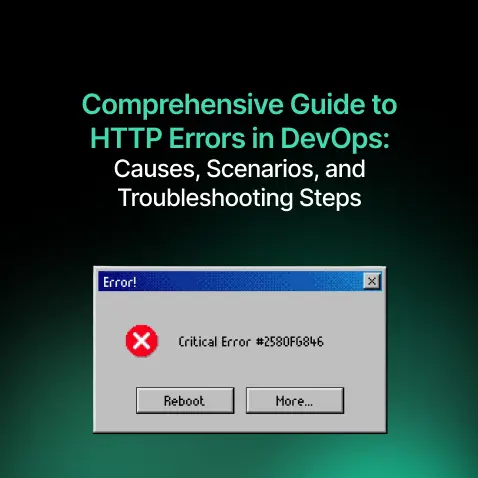
Comprehensive Guide to HTTP Errors in DevOps: Causes, Scenarios, and Troubleshooting Steps
- Blog

Trivy: The Ultimate Open-Source Tool for Container Vulnerability Scanning and SBOM Generation
- Blog
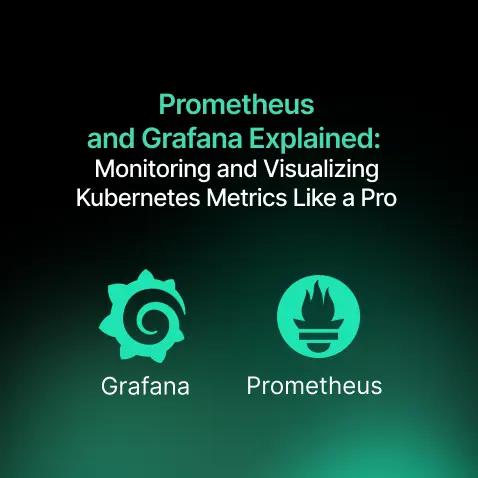
Prometheus and Grafana Explained: Monitoring and Visualizing Kubernetes Metrics Like a Pro
- Blog
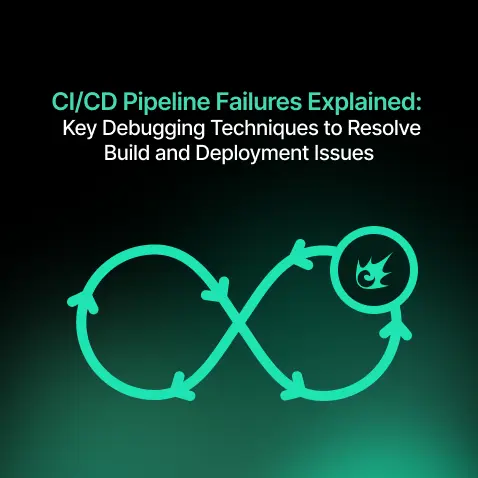
CI/CD Pipeline Failures Explained: Key Debugging Techniques to Resolve Build and Deployment Issues
- Blog
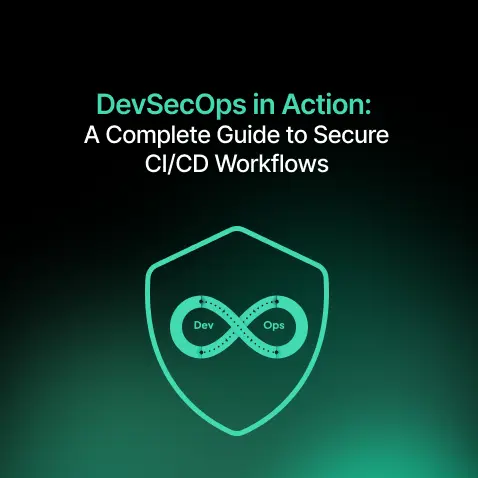
DevSecOps in Action: A Complete Guide to Secure CI/CD Workflows
- Blog
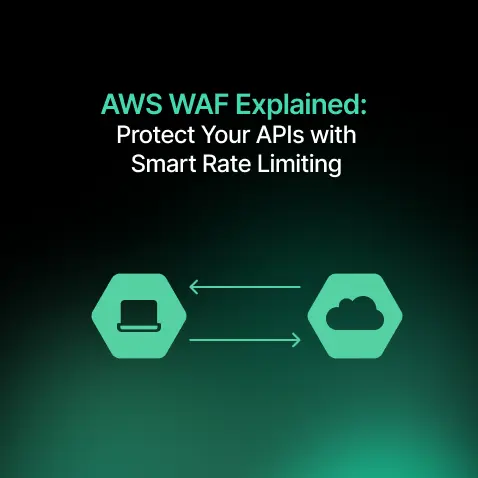
AWS WAF Explained: Protect Your APIs with Smart Rate Limiting
- Blog
Lorem ipsum dolor sit amet, consectetur adipiscing elit. Ut elit tellus, luctus nec ullamcorper mattis, pulvinar dapibus leo.

